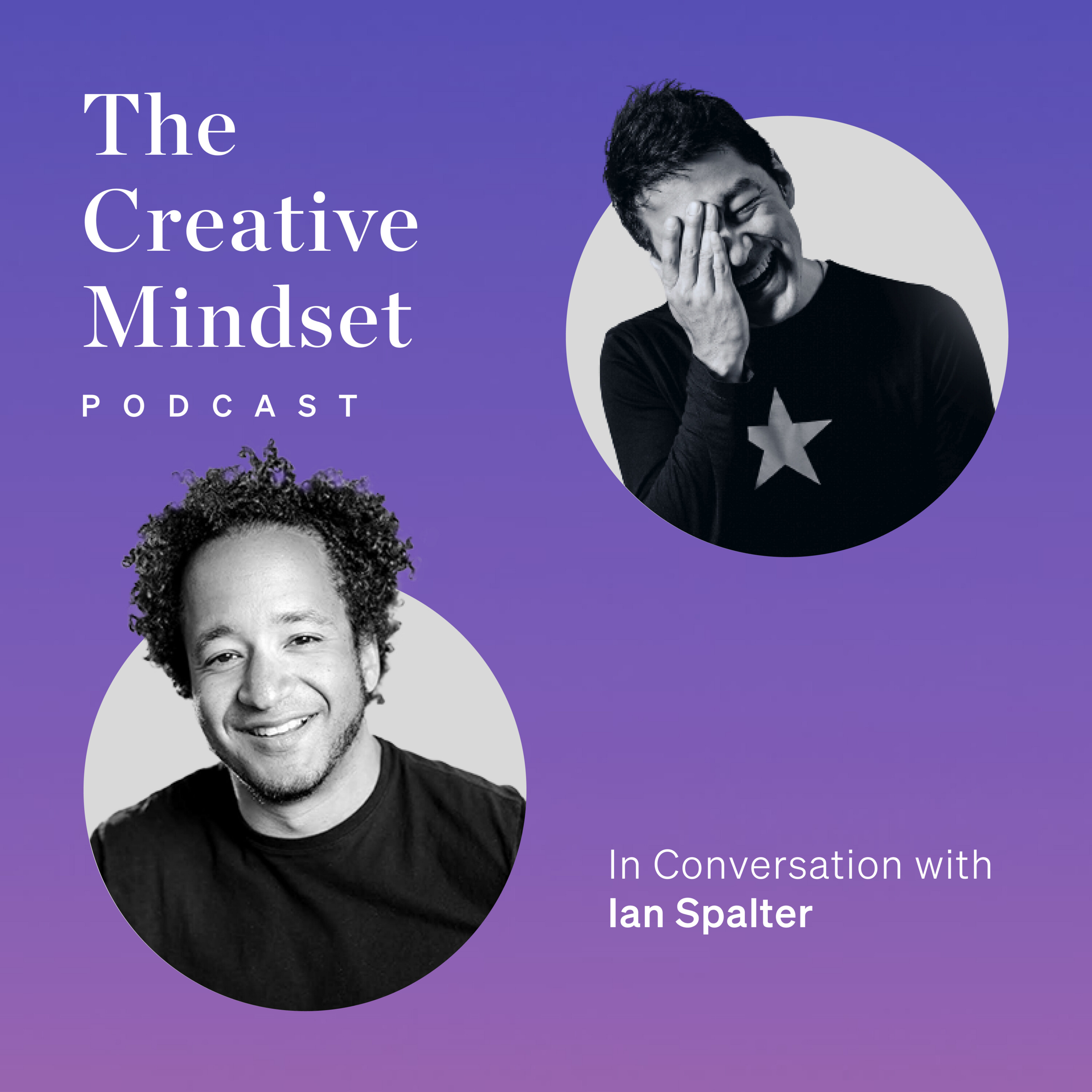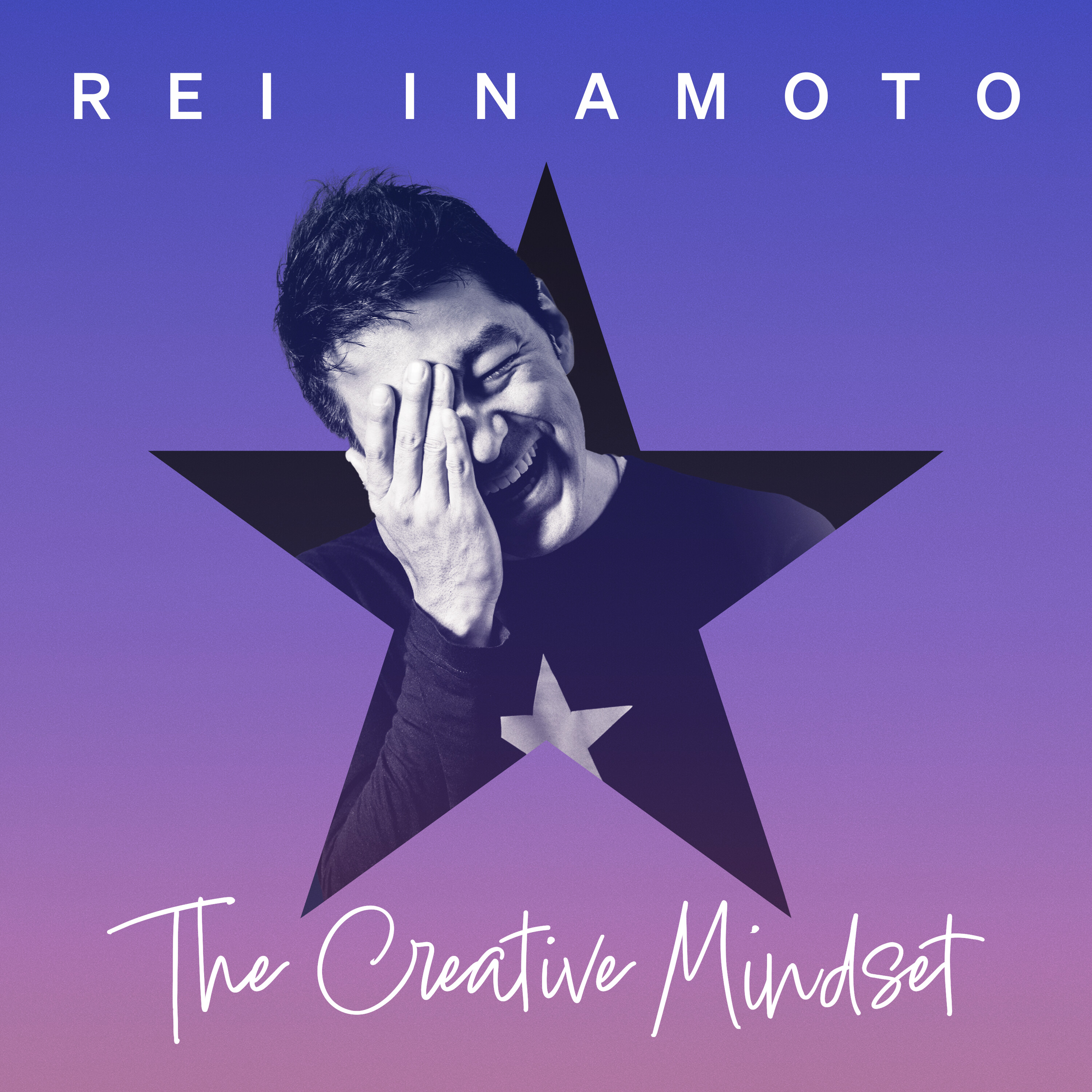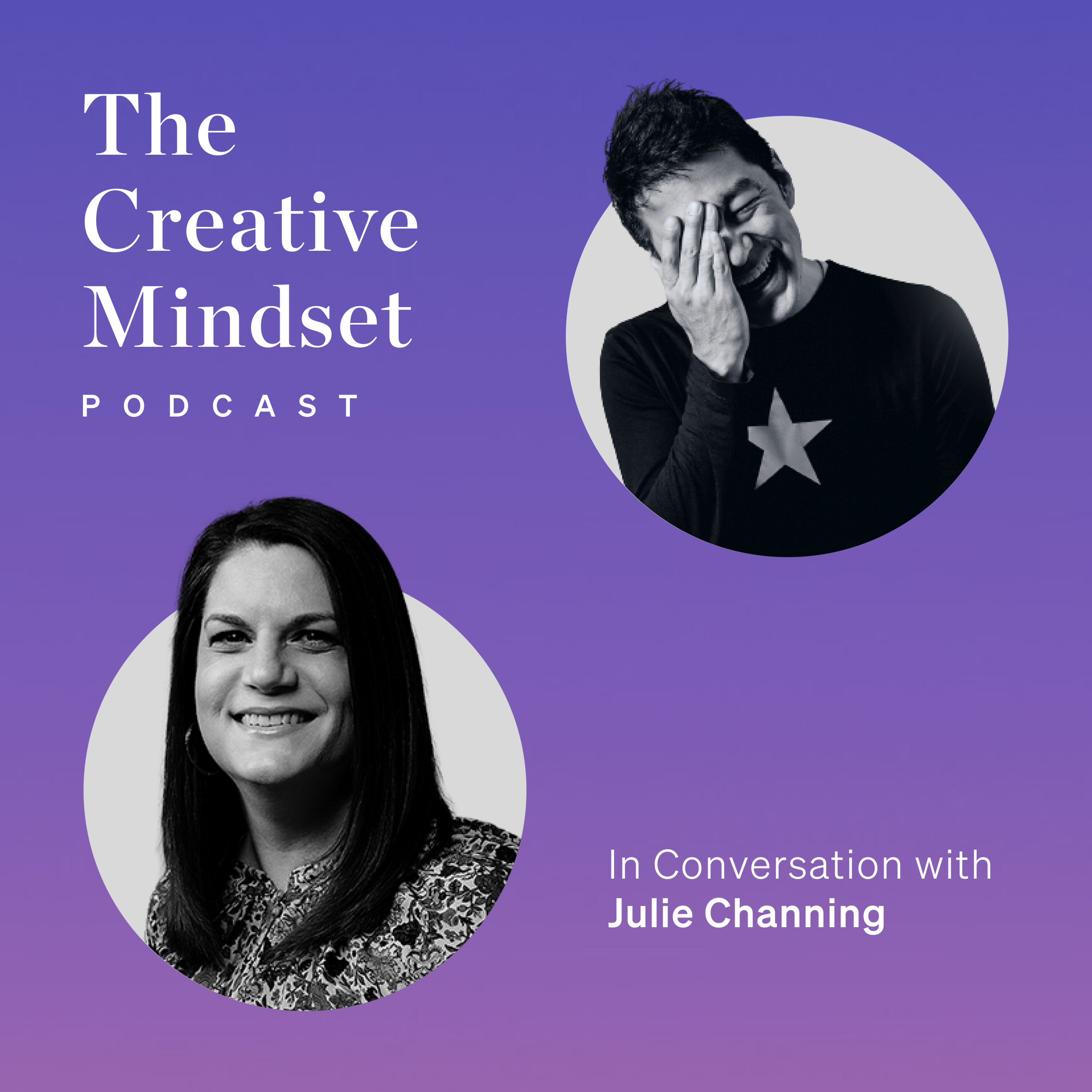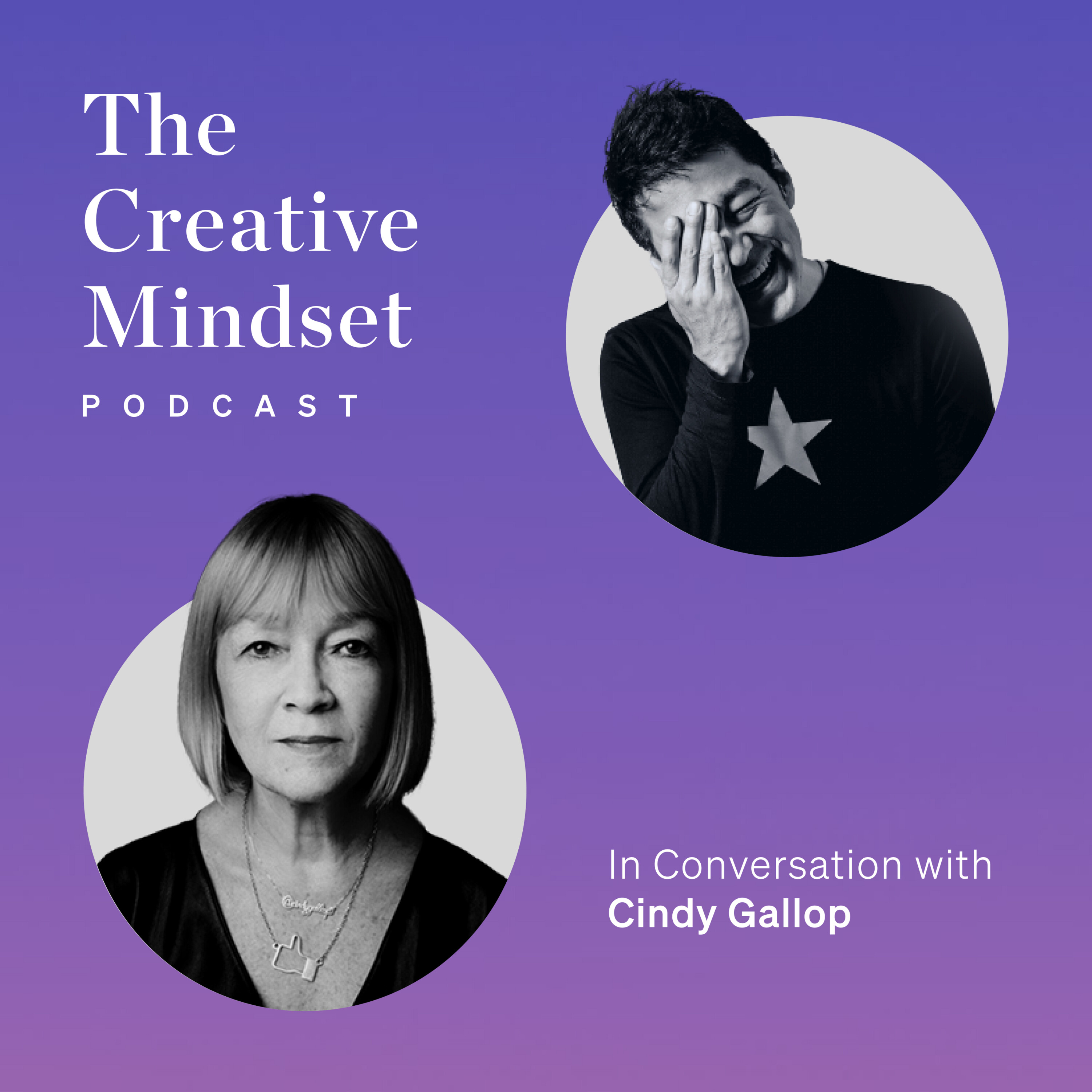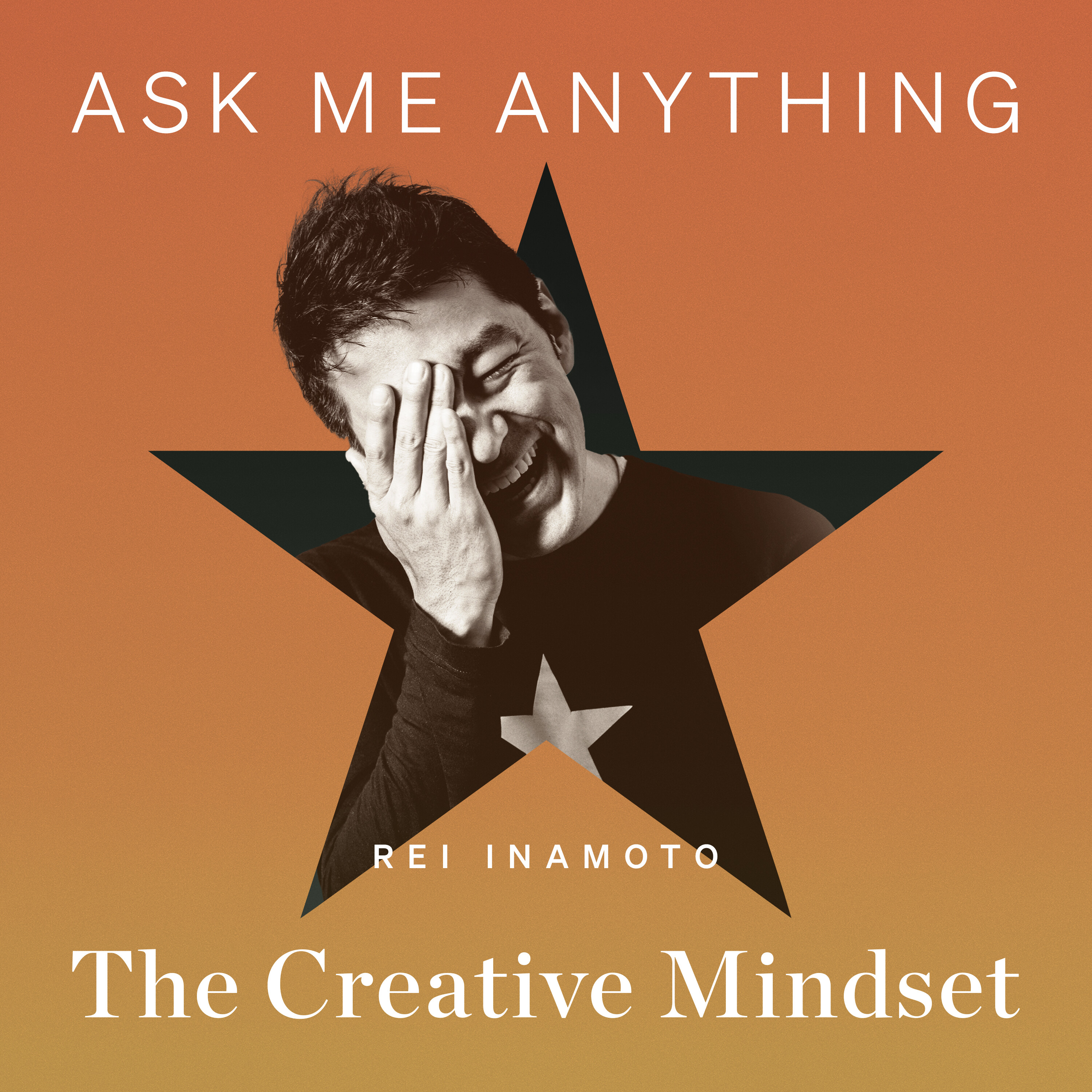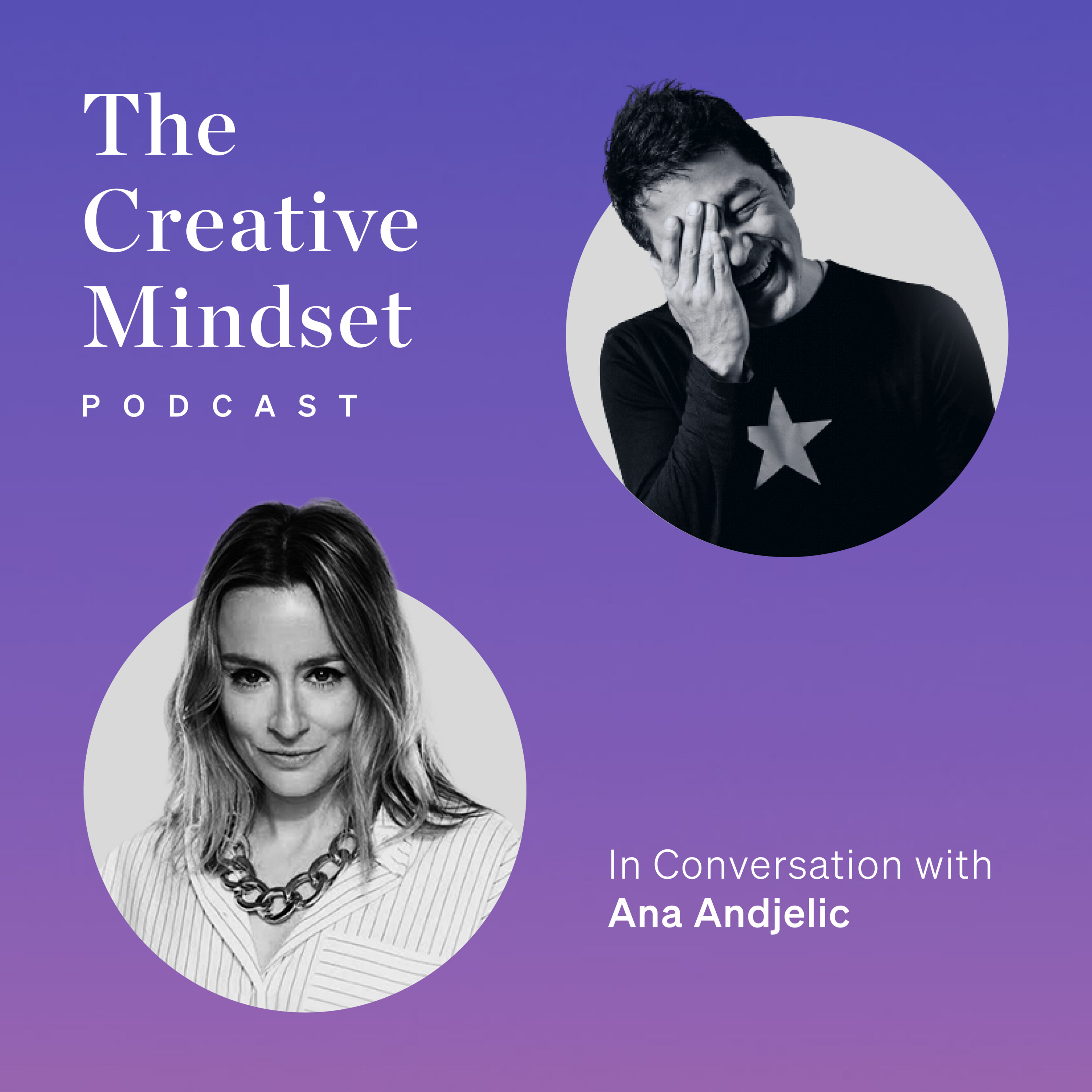This is Reinamoto's podcast, The Creative Mindset.
Hi everyone. Welcome to The Creative Mindset, a podcast about what the future holds at the
intersection of creativity and technology. I am Reinamoto, the founding partner of I&CO,
a global innovation firm based in New York and Tokyo. We have a new type of episode today
called AMA, Ask Me Anything, where we answer questions from our listeners.
But what we would like to do differently with this episode is instead of just answering them
by myself, we invite them to be on our show and make that into an open conversation.
The very first guest of this segment is Corinne O'Keefe. To give a little background and to be
transparent, she is an old colleague of mine from AKQA from years and years ago. Since she left
AKQA, she went to a creative agency called Analog Folk, where she stayed, I believe, for
seven or eight years or so, working her way up to executive creative director.
She was most recently based in Amsterdam. And just a couple of months ago, she got recruited
by a company called Digitas in the UK, where she took on the role of the chief creative officer.
A few months ago, in between jobs, she reached out to me and wanted to get my advice on being
a chief creative officer. She's spent at least a decade in the creative industry, and she's gone
through different ranks. But this is the first time that she's going to be serving as a chief
creative officer. When she and I worked at AKQA, I was her chief creative officer, and she was
working at the New York office where I had moved from San Francisco to also be the executive
creative director of that office. And I remember working with her from time to time and seeing
how special talent she had as a young copywriter. And I remember telling the creative director who
was managing at the time that, hey, you know, we should watch her because I think she's going to
go somewhere. Years later, that came true, and I'm so proud to hear that she's taking this role
as the chief creative officer. I was really surprised to hear from her randomly, but I'm
super pleased to share this conversation with Corinne based on the kind of impression,
the first impression that I had from her years ago, and the fact that she's becoming this
really established leader in a completely different environment. So let's get started.
Recently, Corinne just reached out to me completely out of the blue, I think. And
just for the context for the listeners, if you could give a quick introduction about yourself,
and then if I think if you miss anything, I'll chime in to give a bit more color
in terms of your illustrious and successful career that you've had.
Well, we first met when I was an associate copywriter at AKQA in New York. I remember
I'd started there right before you had moved over from San Francisco. And I had been at AKQA,
I was in New York, and then I went to Portland, worked my way up to associate creative director.
And then I actually left there to go help open the Analog Folk Portland office where we had Nike
as our first flagship client. And I was overseeing creative there both in Portland and New York
until about three years ago when I relocated to Amsterdam where I helped open the office here to
help the agency expand both the Nike relationship globally, but also into a new market. It's been
eight years at Analog Folk after we have worked together for almost six. And now I'm in a
transition period where I'm actually stepping into a chief creative officer role at Digitas UK
in London. And so I was sort of in this transition mindset and I was thinking about kind of how do
I prepare sort of at this moment of transition, not just role, but also, you know, been with
Analog Folk for a very long time. It's been an incredible experience. But so as I was preparing
for this sort of transition mindset, I was thinking about who I could reach out to. I think
there's this false assumption that we only seek sort of advice when we are at more junior levels
of our career. And I don't believe in that. I think one thing I've really tried to do with my
incredible leadership is model what I say and model what I believe. And that's asking for help is the
strength, not a weakness. And so when I was thinking about who to reach out to, I thought
who better to reach out to than Ray, who I haven't spoken to in almost a decade.
Yes.
Portland, which is a much, much smaller market than New York. And then going from there to
Amsterdam, which is a foreign market for you. And then stepping into a different market,
into a bigger role. So kudos to you for having the mentality to seek new challenges on your own,
as opposed to feeling comfortable and just being in one static place.
Thank you. I appreciate that. I think when I reached out to you just about connecting and
talking about your experience, you brought up doing this podcast. And I believe I told you my
first instinct was absolutely not. No way do I want to do that. It made me really uncomfortable.
But then my second thought was, that's exactly why I should do it. Because I really think the
things that make us uncomfortable are the things that are our biggest catalyst for growth.
And so I'm glad that I did. And I also think, thank you for saying all that.
But one of the other reasons I did reach out to you is obviously, I think none of us should
sell ourselves short in terms of the influence we have on people around us. The analogy I gave you
was one of my favorite Super Bowl halftime shows recently was the Dr. Dre one a few years ago.
And it was because the whole show was the house that Dre built. And it was all these incredible
musicians that they brought together that he had influenced, whether he collaborated with them
or saw potential in them. And we all have these spheres of influence. And I think I said to you,
you're like the Japanese Dr. Dre of digital where you have these fears. And we do, we influence
everyone above us, below us, beside us throughout our career. And obviously, a decade later,
that influence continues on. I think this is the first time ever that I've been compared to Dr. Dre
and I will take it. I like it. I'll take it. So thank you for saying that.
There are worse people to be compared to.
Yes. So thank you. Thank you for that. So yeah, just let's get into it. Ask me questions.
Yeah. So like I said, I'm just looking for your experience. I think you go from in your career,
in the beginning, you're looking for instruction. And then as we evolve, you're looking for
perspective and sort of things that you can draw from what other people have gone through.
And so just to start with something a little more general to you, what do you think is the
single most important role that a Chief Creative Officer plays in the agency, among the creative
team, and really for the industry at large? Again, just to give some context for the
listeners who might not be familiar with the title structure of the creative department and
the creative agency landscape. Typically, from the entry level, you start as a copywriter like you
did. I started as a designer. In some cases, art director is another title that, especially in the
advertising industry, copywriters and art directors are more usual creative path that people
will take. And then we go from junior associate level to mid-level to senior level copywriters,
art directors, and designers. And I assume the path that you've... The steps that you've taken
were associate creative director, creative director. In some cases, there might be like
group creative director, different levels of creative directors in between. But usually you
go from a creative, meaning that you're the person who's making things, who's hands-on,
coming up with ideas and crafting copy, crafting design, crafting the visuals.
And then you step into a more managerial slash leadership role or becoming an associate creative
director, creative director. And then most recently, you have been the executive creative
director of the agency, correct? Yes. Well, for the past seven years.
Yeah. Right, right, right, right. Yeah. So executive creative director is typically
close to the top of the food chain. And a lot of people do get to that level as people gain experience.
And then some of us would step into, I guess, the holy grail of the chief creative officer
position. When I was at AKQA, by the time I left, I was the chief creative officer globally.
Some companies do have chief creative officers based on the region or country or on office.
And then the role that you're stepping into, is that a country or region-specific chief creative
officer role, or is it global? It's local.
Local, local. Again, just for the context of the listeners, this is the steps that people
go into. And single most important thing for a chief creative officer,
I would say this is the first word that came to my mind, is humility.
Yeah. Yeah. Humility. And
for me, there were two big steps that I had to take. The first big step was going from a creative
director to an executive creative director. And in my case, I became an executive creative
director of a given office that was, in this case, in San Francisco. And it was a few hundred people.
That office was already like 300 people. And in the creative department, I believe, was
close to 100 people. So it was, again, it was a fairly decent size.
And that step of going from a creative director to becoming the executive creative director of
a given office was one very big step that I didn't realize how big of a step that was.
And then the next big step was going from the ECD, executive creative director position,
to the chief creative officer role of AKQA. And the first time that I stepped into that role,
besides me, there was another person, James Hilton, who was chief creative officer for Europe.
And I was, yeah, I stepped into that role for the US and Asia. Yeah. And I had to represent people
that I had never met. Interesting. Yeah.
And up until then, I was representing or I was stepping into a leadership position of people
that I knew either directly or even if I didn't know directly, I could see them physically in the
same environment. But going from that to the chief creative officer role, all of a sudden, I was
representing people who are in different offices or people that I didn't know.
Actually, when I became chief creative officer, I think I was in my mid-30s, which
I think in hindsight, I was probably too young to step into the role anyway. I probably by that
point had 12, 13, close to 15 years of experience. But still, there were a lot of things that I
didn't know and there were a lot of things that I hadn't done. And perhaps due to the lack of my
experience that I tried to overcompensate my lack of experience with confidence and
very strong decisions. Yeah.
And I did those things without hearing people out, without understanding the situation well enough,
and then it backfired. Yeah. Yeah.
So from there, and that I think was the biggest, at least initial lesson for chief creative officer.
And that's the kind of mentality that I think I kept being in that role throughout at least
my career at AKQA and even now to some extent as well. But getting rid of the assumption and having
that humility as a leader and as a creative leader to, I guess, to have respect for people that I work
with. Yeah. One thing I've seen over the course of my career, and this is a really good reminder
for me is that when we do feel out of our element, we feel like we have to put these masks up and not
be true to ourselves. And one thing that I've also found is that the assumption for us as creative
leaders is that we have to have all the answers, especially at the top, top role, which is likely
the pressure that we feel. But we don't have all the answers. We're not doing math. There's
not a one correct answer. So I love the idea of listening to the people around you.
Because I think one thing that is slightly different about my path up versus some other
people is that when I left AKQA, I opened the analog folk office. So it was just me on my couch
for the first three months. And even throughout the rest of it, while my title has been executive
creative director, we actually don't have a chief creative officer. So I have been at the top
without any sort of guidance above me. And so I've been flexing for a long time, both up and down
in terms of being able to help, sort of having meetings with CMOs and working within the industry
and top leaders, but then also on the ground, sort of working with the team to create the work.
I think the shift for me is really going to be what you just said around the people I don't know.
Somebody made a joke about people are going to see you in the elevator and be like,
oh, it's our new CCO. And I was like, that's crazy to me, given who I really am.
And so it's one of those questions like based off that, as you stepped into these new sort of roles
and sort of transition from either company, or as you said, you kind of flexed into different
CCO roles, even when you were in AKQA. And now, obviously, at IANCO, I'm sure that's been very
different. You kind of touched on the idea of leadership at different sizes a little bit,
but can you unpack that a little bit more? Like what is your experience like when you step into
either an existing culture versus one that you're building yourself and how that ranges and things
like having to shift from direct management, which is what I think you get at a smaller place,
to indirect management, which is kind of what you're talking about in terms of having to work
with people who you might not necessarily know directly? Yeah. The next aspect of being a CCO
that was, I think, useful down the line and something that made a big difference when
I wasn't working. So being a CCO, because you are a representative in many ways,
you're a representative of a group of people, you are representative of the given office that
you're working for, and you're representative of the company that you belong to as one of the top
senior leaders of that company. So unlike the previous positions that I've had and that you've
had, you are less and less working directly with the team members. But one of the things that I did
very consciously one year, and I don't know if I ever told you this story, but as I stepped in
to that role, I was a newly promoted CCO. I was making a cup of coffee in the
kitchen. This is in San Francisco. And there was another person that I didn't
recognize, a young person. And I asked him, oh, I'm Ray. Are you new at AKQA? And he goes,
oh, yeah, I'm new. And I asked him, oh, what do you do? And he goes, I'm a copywriter.
And he goes to me, oh, what do you do? And I'm like, oh, you don't know who I am. I'm your
boss's boss's boss, probably. Not to be too arrogant, but there were multiple levels between
that young individual. And I was still pretty young, but there were multiple levels in between.
And at first, I was a little taken aback that you just started at AKQA. You probably should know me.
But then I thought about it. Well, you know what? Maybe it's on me. I'm not doing enough to
let people know who I am and what I do, at least in that environment. So maybe
it's not his fault. I'm not doing enough to make myself visible.
So I said, OK, every month, I'm going to make a point of talking to everybody in the creative
department at least once, even if it's like a three-minute chit-chat. It's probably the second
biggest thing that had made the most profound positive impact as a leader. And the second
aspect that I would, now that I'm talking about it and thinking about it out loud with you,
is visibility. Having that kind of visibility on a regular basis, even if it's as quick as
a couple of minutes, made a big difference on a personal level.
I would just say I love that so much for so many reasons. And you probably don't remember this.
I don't know if it was the same story or a different time. But when I, my first week at
AKQA New York, again, first job right out of college, a similar thing had happened with
somebody in the kitchen there. And I believe you were visiting from San Francisco at the time.
You hadn't moved over yet. And somebody asked you what you did. And you just responded,
designer. And not in an arrogant way, not in a like, taking the piss way, but in a way where
you're just like, designer. And walked away. And then I was at a table with some interns and people
and they're like, oh my god, he didn't know who Ray was. And it was like this whole thing.
But I remember very early on in that having one being like, OK, I need to know who Ray is.
Number two, very, very much like having interactions with you, like these small
micro interactions that you're saying, which I think really did have a difference in terms of
how comfortable I felt, especially when you said I had the opportunity to work directly with you
quite a lot. And what I love about that is I feel like some people, a lot of people might feel
it's the team's responsibility to know who I am as opposed to shifting it and be it's my
responsibility to introduce myself to the team, to make myself visible so they feel comfortable
in knowing who I am as opposed to it being sort of this thing. So that's quite funny. I really like
that. I think leadership, again, your question about leadership at scale is something that
technology allows you to do it because of these tools that we have. But also, I think what
we as leaders have to be careful about is to not rely on technology to create those connections
and really make an effort to reach out to individuals on one-on-one basis as much as possible.
And it's not the responsibility of the individuals. I think it's the responsibility
of the leader to make an effort to reach out to individuals, even if it's 50 people, 100 people,
if you can make, and you don't have to do it every week because it's not possible, but
if you make an effort to do it over time that you have a connection with individuals separately.
And I think that the trick for leadership at scale is how personal can you make that
relationship with individuals? Yeah. I think that's a really good point. And what I'm taking
both from sort of critical role of CCO plus sort of regardless of level or scale or existing culture
versus building culture is connections, human one-to-one connections and figuring out different
ways to be able to do that in a genuine way and an authentic way, as opposed to allowing things
like technology to become a crutch where while it is a connection, it's not that sort of more deeper,
genuine way where you are building, I guess, this comfortability level, which is necessary to build
trust. That was the first installment of AMA, Ask Me Anything, where I answered a question
from our audience. The question came from an old colleague of mine, Corinne, and she's somebody
who's stepping into the chief creative officer role for the first time. I've spent years being
in that role, and I have to say that I failed many, many times. And at the time, I was so embarrassed
of making those mistakes. However, looking back at them now, they do make me cringe, but the fact
that I went through those failures and mistakes have made me a better leader. I hope to think
that I was a better leader because of those mistakes. The first point that I made to Corinne
was humility. The episode that I shared with her was way back when, when I was growing as a manager
and as a leader. One of the most useful and meaningful things that I think I was able to do
was to talk to everybody in the department, even if it's three minutes or less every couple weeks
or so. I shared with her the effort that I made for more than a year when I used to go around
the office, multiple floors, and stop by at everybody's desk to have essentially a chit-chat
with each person. And to this day, I think that was the most effective and the best
leadership efforts that I made over the years. Eventually, I went from managing one office and
50, 60, even 100 people to managing the creative departments of multiple offices,
some of them directly and some of them indirectly. I would travel to different offices
trying to see what they were working on, trying to help where they may be struggling.
But one of the habits that I tried to repeat everywhere I went was to talk to the individuals
one-on-one, even if it's only a minute, and make myself available to them and let them know either
directly or indirectly that I'm as accessible as anybody can be, even if I were on the other side
of the world, quite literally. Corinne, going into this role for her first time,
and I think she's managing a couple of hundred people, so it's difficult for her to get to know
everybody, but letting people know that she's accessible and she can be a regular human being,
just like anybody else, I think would go a long way. I knew Corinne when she was a young copywriter
more than 10 years ago in New York. She since then moved to Portland, Amsterdam, now in London,
and I'm so proud of the achievement that she's made as not just as a creative, but as a creative
leader, and I wish her nothing but the best of luck, and I'm sure she will do an amazing job.


